In the modern quest for sustainability and energy efficiency, LED bulbs have emerged as a beacon of innovation and ecological responsibility. However, transitioning to LED lighting is not just about screwing in a new set of bulbs. It requires consideration, planning, and a bit of insight into what this change entails. In this article, we'll illuminate the five critical aspects you should ponder before making the switch to LED bulbs exclusively.
The Benefits of LED
Energy Efficiency
LEDs are lauded for their exceptional energy efficiency, consuming up to 75% less energy than traditional incandescent bulbs. This drastic reduction in energy usage can lead to significant savings on your electricity bill, making LEDs an economically sound choice in the long run.
Longevity
One of the most compelling reasons to switch to LED lighting is their longevity. LEDs have a lifespan that can exceed 25,000 hours, far outstripping the life expectancy of conventional bulbs. This means fewer replacements and less maintenance over time.
Eco-Friendliness
LEDs are free from toxic elements like mercury, making them safer for the environment. Their extended lifespan also results in reduced waste, further bolstering their eco-friendly credentials.
Considerations
Initial Cost
The upfront cost of LED bulbs is higher than traditional bulbs. It's important to view this as an investment, considering the long-term savings in energy costs and bulb replacements.
Compatibility
Not all LED bulbs are created equal. Some may not be compatible with existing fixtures or dimming systems in your home. Research and possibly consult with a professional to ensure a seamless transition.
Color Temperature
LED bulbs come in a range of color temperatures, affecting the ambiance of a room. Whether you prefer a warm, cozy glow or a cool, bright light, understanding color temperature will guide you in selecting the right LEDs for your space.
Dimming Capabilities
If you enjoy the flexibility of adjusting light levels, check the dimming capabilities of LED bulbs. Some may require specific dimmer switches to function correctly without flickering or reduced lifespan.
Implementation
Assessing Your Needs
Evaluate your current lighting setup to determine what you need from your LED bulbs. Consider factors like brightness (measured in lumens), color temperature, and where energy savings can be most beneficial.
Planning the Transition
Transitioning to LED lighting doesn't have to be an all-or-nothing approach. Plan your switch in phases, prioritizing areas with the highest usage or those where energy savings will be most impactful.
Professional Consultation
Consulting with a lighting professional can provide valuable insights into the best types of LED bulbs for your needs and how to address any compatibility issues.
Potential Drawbacks
Upfront Costs
While the long-term savings are clear, the initial investment in LED lighting can be a barrier for some. Consider the potential for rebates or energy-saving incentives offered by local utilities or government programs.
Light Quality Concerns
Some individuals have concerns about the quality of light emitted by LEDs. Advances in technology have largely addressed these issues, but it's worth testing a few bulbs to find ones that meet your preferences for light quality and color accuracy.
Making the Switch
Step-by-Step Guide
- Assess your current lighting and identify priorities for replacement.
- Choose LED bulbs that match your desired brightness and color temperature.
- Consider any necessary adjustments to fixtures or switches for compatibility.
- Implement the switch in phases to manage costs and adjustments.
- Monitor your energy savings and adjust your plan as needed.
Conclusion
Switching to LED bulbs is a smart, sustainable choice that offers long-term benefits for both your wallet and the planet. By considering the factors outlined above, you can ensure a smooth transition to a brighter, more energy-efficient future.
FAQs
1. Are LED bulbs significantly more expensive than traditional bulbs?
While the initial cost is higher, the long-term savings in energy and replacement costs make LED bulbs a cost-effective choice.
2. Do LED bulbs really last as long as advertised?
Yes, LED bulbs can last up to 25 times longer than incandescent bulbs, with many offering lifespans of 25,000 hours or more.
3. Can I use LED bulbs with my existing light fixtures?
In most cases, yes. However, some older fixtures may require modifications or specific types of LED bulbs for optimal performance.
4. How do I choose the right color temperature for my space?
Consider the ambiance you want to create. Warm white (2700K–3000K) is ideal for cozy, inviting spaces, while cool white (3500K–4100K) and daylight (5000K–6500K) are better for task lighting and areas requiring focus.
5. Are there any environmental benefits to switching to LED bulbs?
Yes, LEDs are more energy-efficient, have a longer lifespan, and are free of toxic materials like mercury, reducing both energy consumption and waste.
 Beyond Convenience: How Smart Devices Can Enhance Home Security03/28/2024Posted in: GuideRead more
Beyond Convenience: How Smart Devices Can Enhance Home Security03/28/2024Posted in: GuideRead more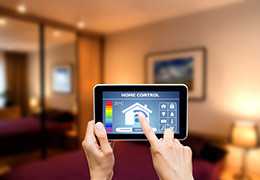 The Ultimate Smart Home Starter Kit: Must-Haves for Beginners (Affordability Edition)03/28/2024Posted in: GuideRead more
The Ultimate Smart Home Starter Kit: Must-Haves for Beginners (Affordability Edition)03/28/2024Posted in: GuideRead more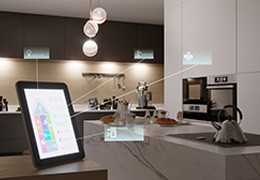 Illuminate Your Life: Home Lighting Automation Explained03/28/2024Posted in: Smart HomeRead more
Illuminate Your Life: Home Lighting Automation Explained03/28/2024Posted in: Smart HomeRead more
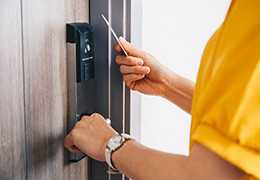 Enhance Your Home Security with a Smart Lock: The Ultimate Guide03/28/2024Posted in: Smart HomeRead more
Enhance Your Home Security with a Smart Lock: The Ultimate Guide03/28/2024Posted in: Smart HomeRead more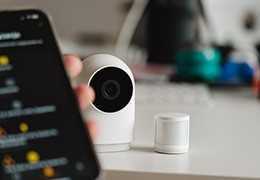
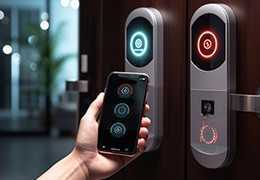 The Ultimate Guide to Home Automation Hubs02/12/2024Posted in: Smart HomeHome automation...Read more
The Ultimate Guide to Home Automation Hubs02/12/2024Posted in: Smart HomeHome automation...Read more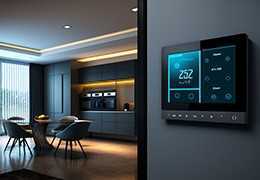 Enhance Your Security: Smart Home Solutions02/12/2024Posted in: Smart HomeIn today's...Read more
Enhance Your Security: Smart Home Solutions02/12/2024Posted in: Smart HomeIn today's...Read more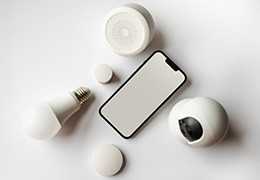 Smart Light Compatibility: Ensuring Seamless Integration02/12/2024Posted in: Smart LightingIn the realm of...Read more
Smart Light Compatibility: Ensuring Seamless Integration02/12/2024Posted in: Smart LightingIn the realm of...Read more
 Beyond Convenience: How Smart Devices Can Enhance Home Security03/28/2024Posted in: GuideSmart home...Read more
Beyond Convenience: How Smart Devices Can Enhance Home Security03/28/2024Posted in: GuideSmart home...Read more The Ultimate Smart Home Starter Kit: Must-Haves for Beginners (Affordability Edition)03/28/2024Posted in: GuideTurn your home...Read more
The Ultimate Smart Home Starter Kit: Must-Haves for Beginners (Affordability Edition)03/28/2024Posted in: GuideTurn your home...Read more Illuminate Your Life: Home Lighting Automation Explained03/28/2024Posted in: Smart HomeThis guide...Read more
Illuminate Your Life: Home Lighting Automation Explained03/28/2024Posted in: Smart HomeThis guide...Read more
 Enhance Your Home Security with a Smart Lock: The Ultimate Guide03/28/2024Posted in: Smart HomeThis guide...Read more
Enhance Your Home Security with a Smart Lock: The Ultimate Guide03/28/2024Posted in: Smart HomeThis guide...Read more



Leave a comment